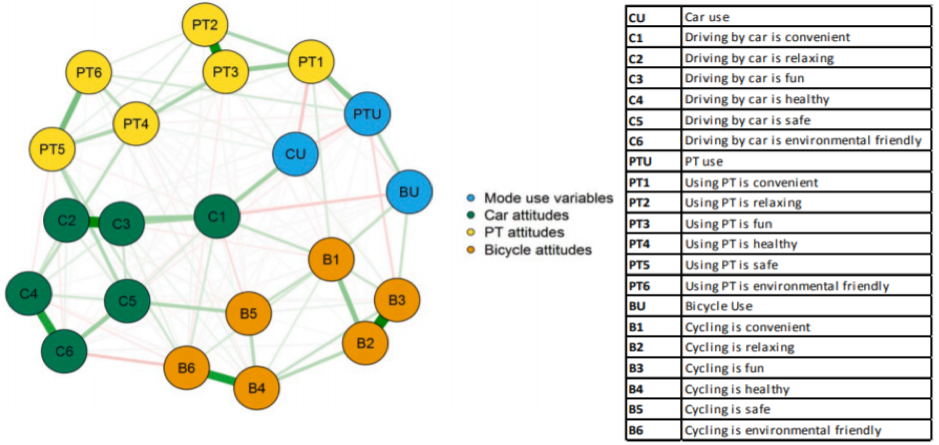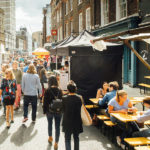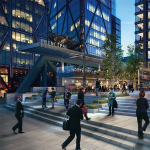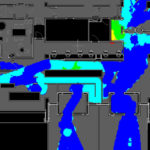It has long been acknowledged that human behaviour is highly complex. As transport planners, we need to make sense of this complexity in order to forecast changes in travel behaviour and provide for this. This can be done by engaging with psychological theories that offer explanations as to why people form attitudes and behave in certain ways.
It is particularly crucial to engage with such theories during this time. There is no doubt that public transport use has decreased and active travel mode use has increased as a result of Covid-19. To match and encourage this, new schemes have emerged or been accelerated, which include new pedestrian and cycle routes, closing streets to through traffic, and kerbside parking removal.
However, will this active travel trend continue? Will people continue to utilise the new infrastructure that has been installed and embrace the new street layouts that have emerged?
Active Travel Modes: Part of a New “Script”?
Some psychological theories posit that certain travel behaviours become established and common-place through “scripts”. Many humans prefer certainty to uncertainty, and to ensure certainty specific sequences of behavioural acts are formed – a “script” that we expect to follow. As behavioural acts are repeated, they gradually become automatic responses. Once the first item on the script occurs, the acts that follow this become automatic as this first activity keys in the rest of the script.
However, recently we have been forced to change our travel behaviour. The situation we have found ourselves in is unique because people have had to change their practices. We’ve had to overcome our resistance to change because of Covid-19. This shows that if change is inescapable and required, then we find a way to override our scripts. Being put in this position is partly a positive thing. It has shown that we are capable of active travel, and schemes that stakeholders have been trying to implement for some time have been brought forward.
Having said this, we also have the ability to go straight back to our old schemas. Therefore, will this “change state” that we are in, where walking and cycling have become more common, last long enough such that it becomes established, practiced and routine? Will we be recoded to create a “new normal” so that going back to the old scripts becomes the change? It is important that the stage is reached where returning to what was done before i.e. only small amounts of active travel, becomes the change, with the high uptake of active travel as the “norm”.
The Psychological Network Model
Research has also included use of the psychological network model, which assesses the relationships between attitudinal and behavioural indicators.
Specific research surveying Dutch adults operationalised behaviour and attitudes. To assess travel behaviour, participants were asked how many kilometres they travel (approximately) in a regular week, using the following modes of transport: car, public transport and cycling. To assess travel attitudes, six statements for each travel mode were formulated and measured on a 5-point scale ranging from 1 (totally disagree) to 5 (totally agree). These included [travel mode] is convenient, relaxing, fun, healthy, safe, and environmentally friendly.
The key finding was that for each transport mode, the attitude reflecting the extent to which the use of the mode is considered “convenient” was most strongly connected to the actual use of the mode. Also, as shown in Figure 1, the node C1 “driving by car is convenient” is most central in the psychological network.

Figure 1: Between-Person Psychological Network Model (Source: A new perspective on the role of attitudes in explaining travel behavior: A psychological network model – Maarten Kroesen & Caspar Chorus, 2020).
During this study, research was conducted at the within-person level in addition to the between- person level. It was found that at the within-person level, changes in attitude over time, for example, a stronger agreement with the statement “cycling is relaxing” was not linked to changes in the actual use of the mode (the level of cycling). This means that at the within-person level, it should not be assumed that a change in attitude will necessarily result in a change in behaviour. This highlights the complexity of researching human attitudes and behaviours. It is clear that this area warrants further research to better understand the relationship between attitudes and behaviours.
Conclusions
Nevertheless, these insights provide ideas for future surveys and research into travel behaviour and attitudes, which in turn, can help with our forecasting and planning. As Howard Potter commented in a TPS Article, “There is a golden opportunity to extend our transport planning data monitoring and to include new behavioural research”.
Perhaps if psychological network model research was conducted in the UK and similar results were found, policy could focus on reducing the convenience of the car rather than simply reiterating the benefits of active travel that we have all heard before, such as, cycling is environmentally friendly. This could be done by making the Covid-19 travel alterations more permanent so that newly-adopted active travel mode practices are maintained and become the new norm. Making the closure of certain streets to vehicles permanent, and repurposing on street parking so that there is more space for active travel modes, thereby making them more convenient than the car, could be good starting points.
Overall, conducting more research into travel attitudes and behaviours may be useful for planning and forecasting in terms of future year scenarios in modelling; what future trip generation might look like; and in turn, what kinds of infrastructure designs might be appropriate for developments.
References
The psychology of change: How might the COVID-19 prompt different travel and transport behaviour? – Luis (Pilo) Willumsen and Cliff Edwards. Online discussion (May 2020) available at: https://bit.ly/2UwysWd
A new perspective on the role of attitudes in explaining travel behavior: A psychological network model – Maarten Kroesen & Caspar Chorus (2020)
COVID 19 Response: No Better Time to Decide and Provide – Howard Potter, TPS Blog Article (Apr 2020)







